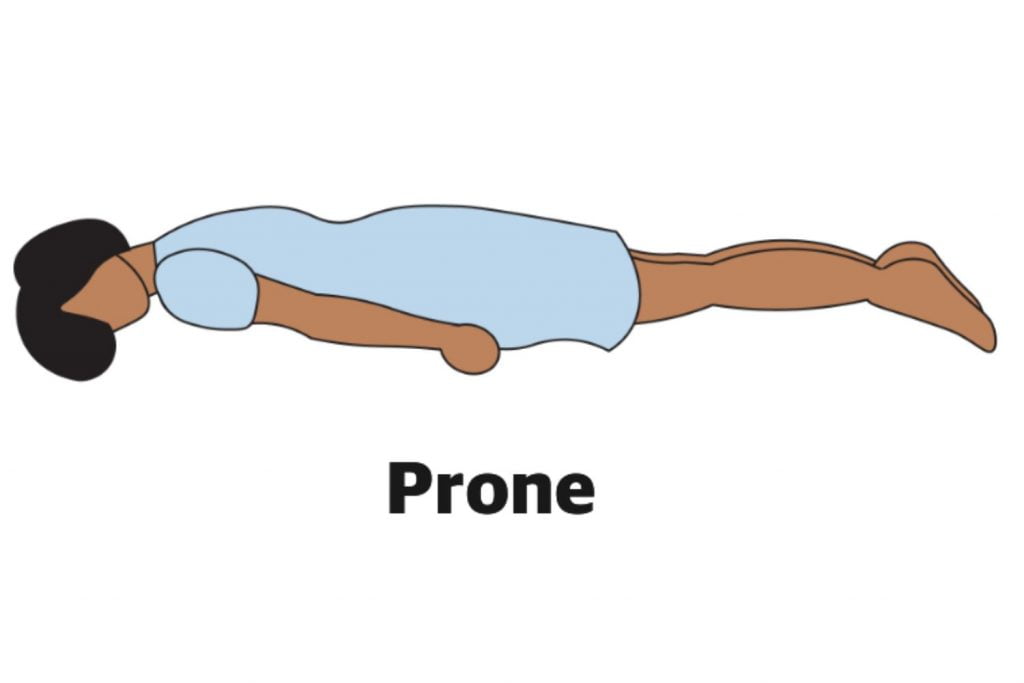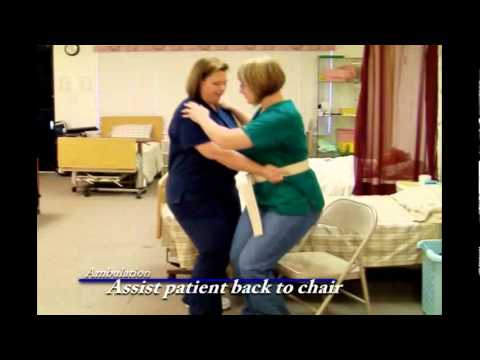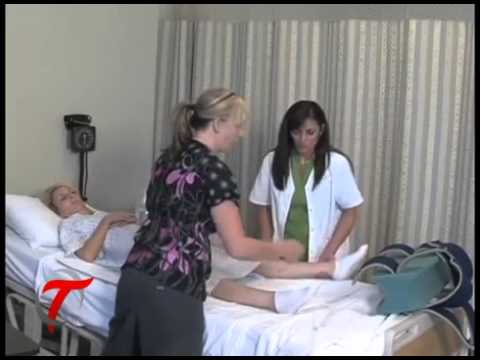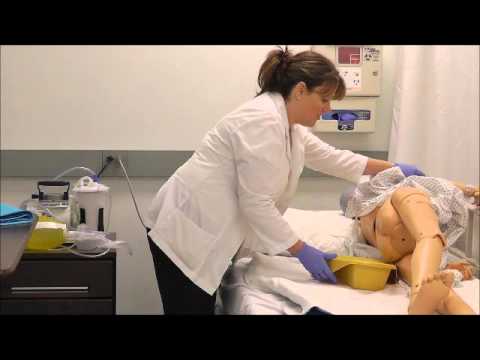
Archives: Procedures
Prone Position
Prone position is not used as commonly as other patient positions. This position allows for full extension of the hips and the knees and gives many bony prominences a break from continuous pressure. However, placing patients in prone position does not come without the risks of pressure ulcers ... Read More
Using a Gait / Transfer Belt to Assist the Resident to Ambulate
Walking (aka, ambulating) helps residents maintain mobility and independence, and prevents complications. However, ambulation must be done safely so that the resident does not have a fall or injury. A gait or transfer belt, when properly used, can increase resident safety. Gait belts can vary between facilities, so make sure you know how to use the one in your facility ... Read More
Logrolling the Resident
Logrolling is a technique used to roll a resident onto their side without the resident helping, and while keeping the resident's spine in a straight line. This is especially important for residents who have had spinal surgery or injury ... Read More
Lateral (Side-Lying) Position
The lateral, or side-lying, position is often comfortable for patients when they wish to sleep or relax ... Read More
Fowler’s Position
Fowler's position is used when a patient is eating, is having difficulty breathing, or is ordered by a doctor. This position is easily recognized because the patient will be sitting äóìstraight up.äó Semi-Fowlers is sitting äóìhalf-way up,äó and is used when patients cannot be laid flat, but wishes to be in a more relaxed position than Fowler's ... Read More
Orthopneic Position
Patients with respiratory illnesses such as chronic obstructive pulmonary disease (COPD) find ways to help themselves breathe more easily. This can include sleeping with extra pillows to keep them propped up or leaning forward to ease the work of breathing. The orthopneic position is one forward-leaning position used to help patients breathe comfortably when they are having difficulty ... Read More
Transferring the Resident from a Bed with a Mechanical Lift
A mechanical lift is used to transfer residents who cannot support their own weight. When used properly, mechanical lifts prevent injuries for both residents and health care workers. It is important that a nurse's assistant be trained to use the mechanical lift before attempting to operate it. Most facilities require at least two health care workers to assist when using a mechanical lift ... Read More
Assisting the Resident to Transfer from the Bed to a Chair or Wheelchair
It is important to remember on which side to place the chair when assisting a patient in transferring. Putting the chair on the resident's unaffected side allows the resident to lead with his or her strong extremity. This eases the procedure for the resident and reduces the risk of falling ... Read More
Assisting the Resident to Sit on the Side of the Bed
Having the resident sit on the side of the bed is otherwise referred to as dangling. When a resident quickly changes position, especially from lying to sitting or standing, there can be a rapid drop in the resident's blood pressure. This drop in blood pressure may cause dizziness or lightheadedness ... Read More
Offering the Bedpan
When a resident is bed-bound, they must use a bedpan to urinate and defecate. This can be embarrassing for the resident, so it should be done with sensitivity to the resident's privacy and dignity. There are two types of bedpans. A regular bedpan is the deeper and more rounded of the two. A fracture pan has a relatively flat upper end with a trough at ... Read More





